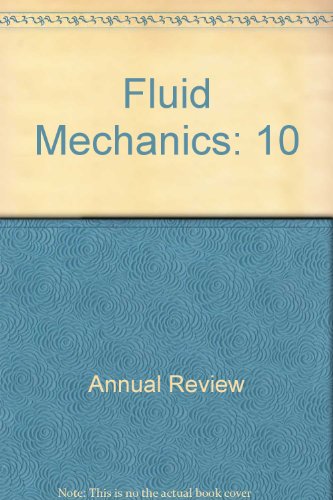湍流中的多尺度速度梯度
IF 30.2
1区 工程技术
Q1 MECHANICS
引用次数: 1
摘要
理解和预测湍流现象在理论和应用上都是一个挑战。小尺度湍流的非线性和非局部特性可以用速度梯度来全面描述,速度梯度决定了湍流的耗散、熵和小尺度拓扑等基本量。速度梯度的动力学方程简洁地概括了湍流的非线性物理;它提供了对许多湍流现象的直观描述,并能够在湍流动力学、统计学和流动结构之间建立联系。滤波速度梯度的考虑丰富了这一观点,以直接适用于大涡模拟的公式来表达非线性和流动结构的多尺度方面。在理论进步以及不断增长的计算和实验能力的推动下,该领域最近的活动已经阐明了湍流物理的关键方面和先进的建模能力。预计流体力学年度评论的最终在线出版日期,第56卷是2024年1月。修订后的估计数请参阅http://www.annualreviews.org/page/journal/pubdates。本文章由计算机程序翻译,如有差异,请以英文原文为准。
Multiscale Velocity Gradients in Turbulence
Understanding and predicting turbulent flow phenomena remain a challenge for both theory and applications. The nonlinear and nonlocal character of small-scale turbulence can be comprehensively described in terms of the velocity gradients, which determine fundamental quantities like dissipation, enstrophy, and the small-scale topology of turbulence. The dynamical equation for the velocity gradient succinctly encapsulates the nonlinear physics of turbulence; it offers an intuitive description of a host of turbulence phenomena and enables establishing connections between turbulent dynamics, statistics, and flow structure. The consideration of filtered velocity gradients enriches this view to express the multiscale aspects of nonlinearity and flow structure in a formulation directly applicable to large-eddy simulations. Driven by theoretical advances together with growing computational and experimental capabilities, recent activities in this area have elucidated key aspects of turbulence physics and advanced modeling capabilities.Expected final online publication date for the Annual Review of Fluid Mechanics, Volume 56 is January 2024. Please see http://www.annualreviews.org/page/journal/pubdates for revised estimates.
求助全文
通过发布文献求助,成功后即可免费获取论文全文。
去求助
来源期刊
CiteScore
54.00
自引率
0.40%
发文量
43
期刊介绍:
The Annual Review of Fluid Mechanics is a longstanding publication dating back to 1969 that explores noteworthy advancements in the field of fluid mechanics. Its comprehensive coverage includes various topics such as the historical and foundational aspects of fluid mechanics, non-newtonian fluids and rheology, both incompressible and compressible fluids, plasma flow, flow stability, multi-phase flows, heat and species transport, fluid flow control, combustion, turbulence, shock waves, and explosions.
Recently, an important development has occurred for this journal. It has transitioned from a gated access model to an open access platform through Annual Reviews' innovative Subscribe to Open program. Consequently, all articles published in the current volume are now freely accessible to the public under a Creative Commons Attribution (CC BY) license.
This new approach not only ensures broader dissemination of research in fluid mechanics but also fosters a more inclusive and collaborative scientific community.

 求助内容:
求助内容: 应助结果提醒方式:
应助结果提醒方式:


